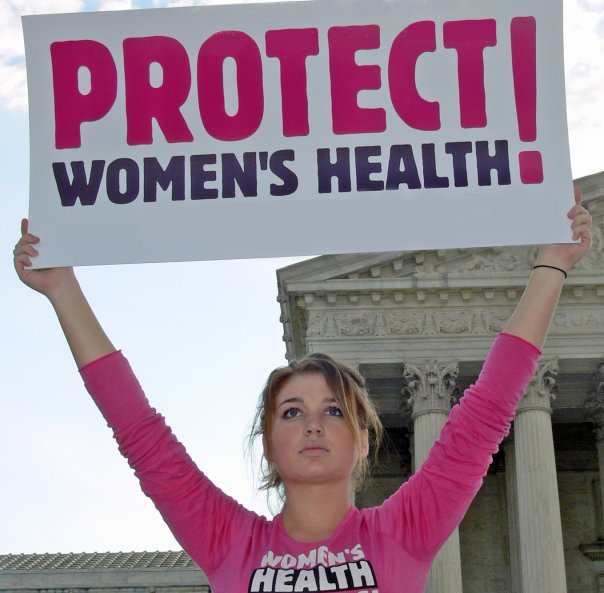This is the second in a series of articles designed to respond to the common slogans and arguments advanced by abortion supporters and activists.
”Abortion Is a Women’s Issue” is perhaps the most popular and accepted of the abortion mantras that have been drummed into the American conscience over the past 20 years. Therefore, it has become an extremely effective tool in the abortion industry’s toolkit. And because the pro-abortion industry presents this idea as fact, many people mindlessly accept that abortion is truly just a women’s health issue.
A recent exchange between Governor Rick Perry and Texas state Senator Wendy Davis illustrated this point. After Senator Davis successfully filibustered the Texas prolife bill in June, Governor Perry said, “Even the woman who filibustered the Senate the other day was born into difficult circumstances. . . . It’s just unfortunate that she hasn’t learned from her own example that every life must be given a chance to realize its full potential and that every life matters.”
Perry was referencing the fact that Senator Davis was born to a single mother and was herself a teenage mom who chose life for her daughter and raised her amidst various challenges.
Senator Davis responded with this tweet:
Today, @GovernorPerry shamefully attacked me and my family, further exposing his belief that he knows what's best for Texas women.
— Wendy Davis (@WendyDavisTexas) June 27, 2013
And then Planned Parenthood further drove the point home: “Rick Perry’s remarks are incredibly condescending and insulting to women. This is exactly why the vast majority of Texans believe that politicians shouldn’t be involved in a woman’s personal health care decisions.(…more)”
So is abortion really about women’s personal health care? And is abortion truly beneficial to women’s health?
I suspect most Americans are very concerned about women’s health care. I know I certainly am. If a woman is diagnosed with breast cancer, I believe she should have access to second and third opinions, surgical and nonsurgical options, pharmaceutical and holistic alternatives. She should have access to every piece of information she needs so that she and her family can make the best decisions for her and her body.
We live in a country that offers the most health care options on the planet, and we should promote these resources to women. We want to preserve and protect life wherever and whenever possible.
However, the problem with painting abortion as being solely a women’s health issue is this: Abortion isn’t just about the woman.
Whereas breast cancer physically impacts just one person—one body at a time—abortion impacts two human beings. How can we label abortion as a “women’s health issue” when the surgical procedure or the pharmaceutical drug that is used to carry it out fatally impacts another living person?
In other words, what do we call an issue when it involves more than one related member of a group?
Medically and scientifically speaking, we know beyond a doubt that life begins at conception. At that moment, a genetically distinct individual is created who will, unless interrupted by natural or unnatural forces, continue to develop into a more mature human being.
Thus, one could reasonably argue that abortion is about neonatal or infant health. If we label the procedure based on whose body is impacted the most, the answer is self-evident. Abortion, which has become a relatively safe procedure for mothers in America today, is always lethal to the unborn child. The baby’s body is torn, shredded, poisoned, and/or vacuumed out in pieces. It would therefore be more accurate to call abortion a “baby’s health issue.”
If, however, we want to be inclusive of all parties involved, abortion is most certainly “a family health issue.” Any procedure that impacts both mother and child is not solely within the realm of women’s health—it is now family health.
And we all know it takes two to tango. Since an abortion is performed only after a pregnancy has been confirmed, and since it obviously takes both a man and a woman for a child to be conceived, then technically and medically speaking, there are THREE persons involved. And it has been researched and documented that all three people are impacted by abortion: the child dies; the mother usually deals with complicated mental, emotional, and physical aftereffects; and oftentimes the father experiences negative emotional complications as well.
Even if we try to simplify the issue by focusing on who makes the decision, abortion as a “women’s health issue” still fails the test. Statistics reveal that most abortions—nearly 80 percent of them—are the result of active or passive coercion. That means the woman is not the primary decision maker in those cases.
So as abortion supporters attempt to position their cause as a “women’s health issue,” we must be ready to step in and explain with logic and science that the effects of abortion—both physical and emotional—extend far beyond women, reaching deep into our families, communities, and society at large.
